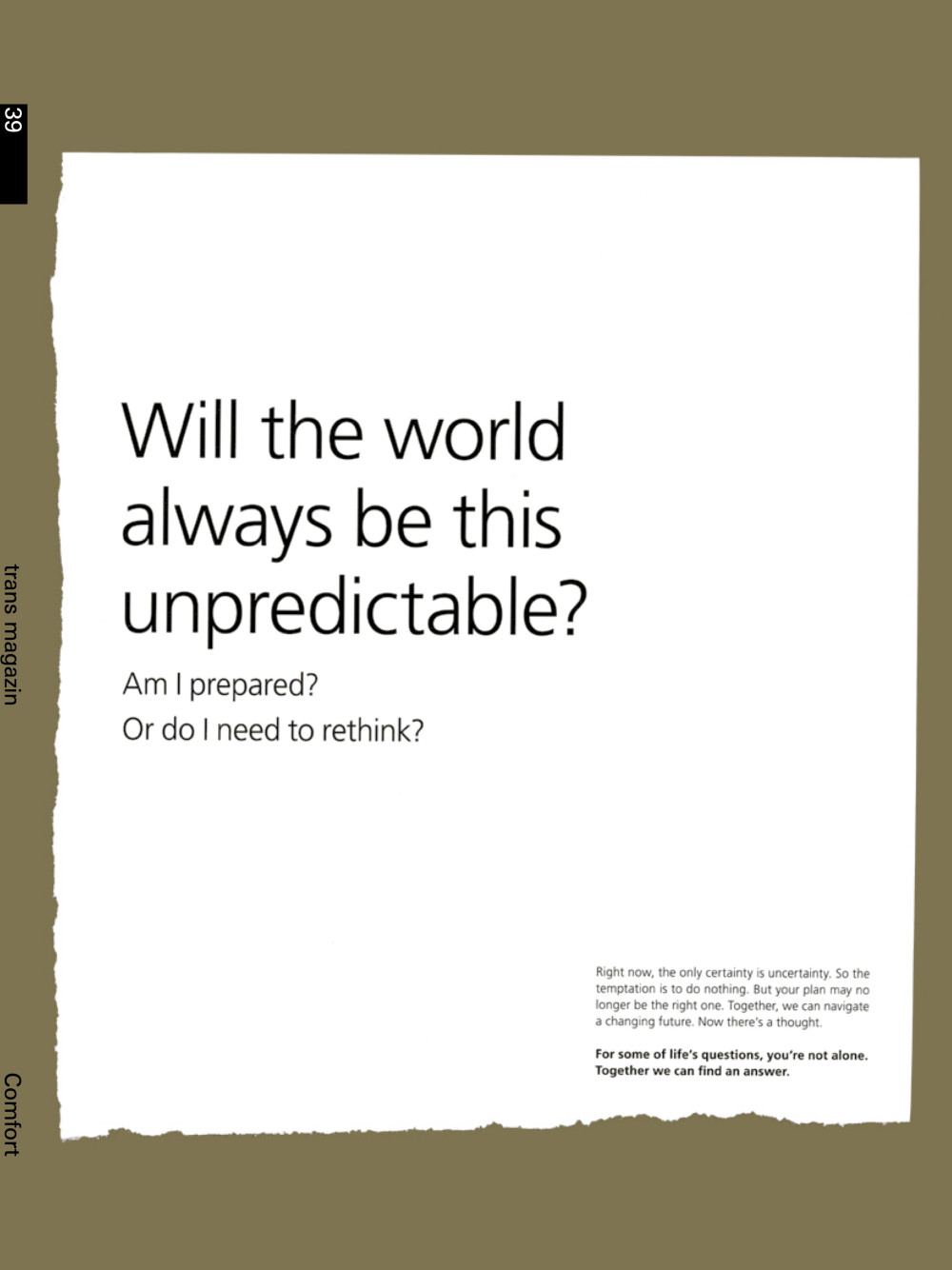trans #39 has been a struggle. The topic «Comfort» was a compromise of sorts that everyone saw as a vessel to explore their interests. A part of the team wanted to make a very clear statement about the need for a more universal and basic architecture and saw trans as a place where a shared position could be articulated. The other part wanted to use the issue to explore the term comfort in its complexity and dissonance – rather conceiving it as an opening up than a narrowing down of the term. Working on the proposals over the last months with their authors, the texts, the magazine, a team dynamic have taken shape. We have become more comfortable with the topic and with one another. In many ways, this development fits trans #39 «Comfort» well. Shared currents and tides of thought are shifting and moving under the surface of the texts. Not all themes are addressed directly, still, they remain present and powerful.
A central theme that runs through the issue is comfort’s elusiveness and ambivalence: comfort can simultaneously create possibilities for emancipation as for enslavement. As an experience, comfort can only be positional and defined individually, while shared discomfort seems to be possible to describe as a unifying experience. The notion of comfort flows and changes over time, well describing and reflecting contemporary society's values and concepts, a shared understanding of comfort shifts with societal relationships to the private space and personal values.
In the magazine, the role of architecture is challenged: its complicity in marginalisation strategies within Zurich and green-washing a building industry contributing to the climate crisis is pointed out. Comfort is used as a lens to examine public space, domestic space, future space from feminist, queer and materialist perspectives – both laying out historical situations and proposing new understandings. Further, comfort’s shiny facade is scratched, revealing the perverse infrastructures required to sustain our addiction to it. Three interviews – with Aristide Antonas, Barbara Buser and Hermann Hertzberger – share perspectives from very different practices, all pursuing ways of working which employ a sensitivity to philosophical, ecological, and social topics, shaping and pushing the contemporary architectural discourse in new directions. And the artist Virginia Ariu’s edition throws a darkly humorous critique on a consumer hustle culture that capitalist society tells us to strive for, suggesting that the pursuit of comfort can never satisfy us entirely.
trans #39 was written in what we hope will be the final months of the Sars-Covid pandemic. In the previous two years, we have primarily lived locked in the comfort of our homes, experiencing a mild dystopia of sorts. Comfort played a particular role in our recent experience. We hope exploring this term now will spark ideas in our readers' minds and serve as a small starting point, or impulse, to reflect on how we live and work together in our built and yet unbuilt environment. All texts share this impulse and desire, none are cynical or pessimistic. We are incredibly proud of the issue, and we hope that you enjoy reading the texts as much as we did bringing them together.
Contributors
Table of content
Three cities and a village with Jan Morris
In the comfort of your own home
Dis/confort : Godards "Une femme mariée" (1964) und die Siedlung "Elysée 2" (1963-1966)
Schmeiss die Möbel aus dem Fenster!
Being in bubble
In denial
Ein Gespräch mit Barbara Buser
Die Geburt des Komforts (aus dem Geiste des Cottage)
Creating conditions : a conversation with Hermann Hertzberger
Safe space and the economy of emotion
Honey, i'm home!
For those who loathe sunday because it's hollow
Strichplatz Depotweg
Filoxenia dream
Alles wird besser, aber nichts wird gut
The critique of cybernetic settlement
Prison of comfort : a conversation with Aristide Antonas
Stay in bed
Comfort with less contact and more hygiene
Volkshaus Limmathaus
"Achtung, die Linden blühen!"
Architecture that queers
